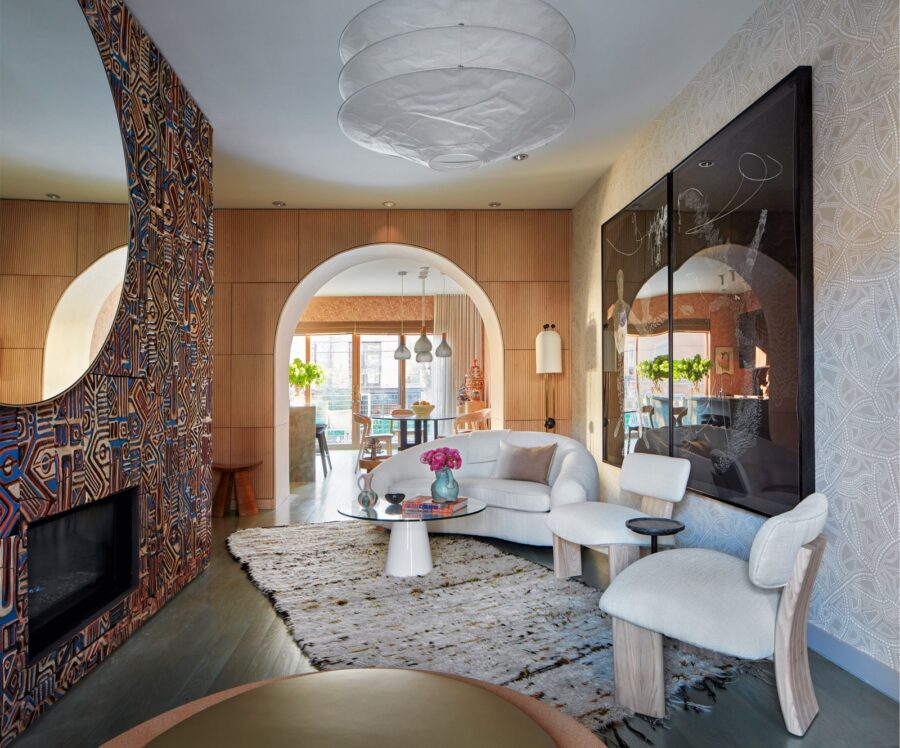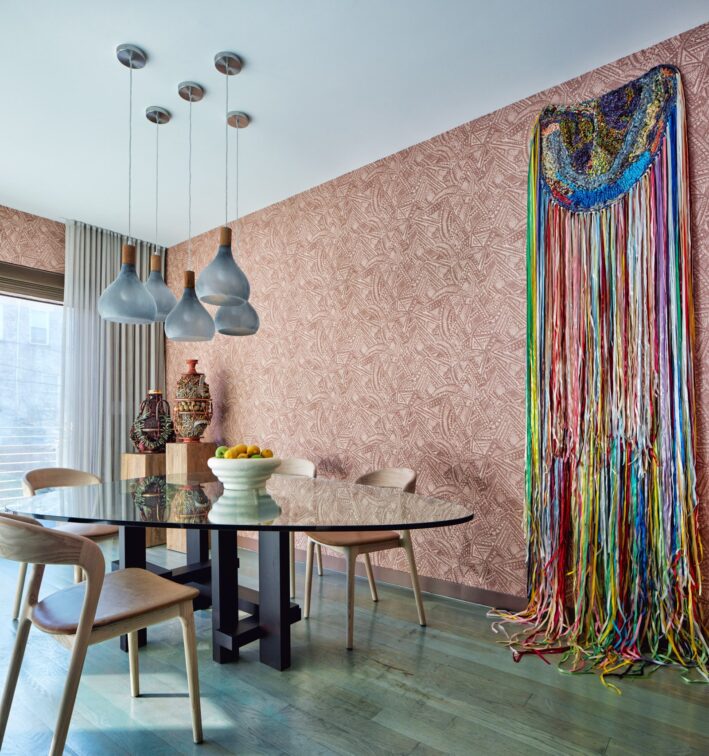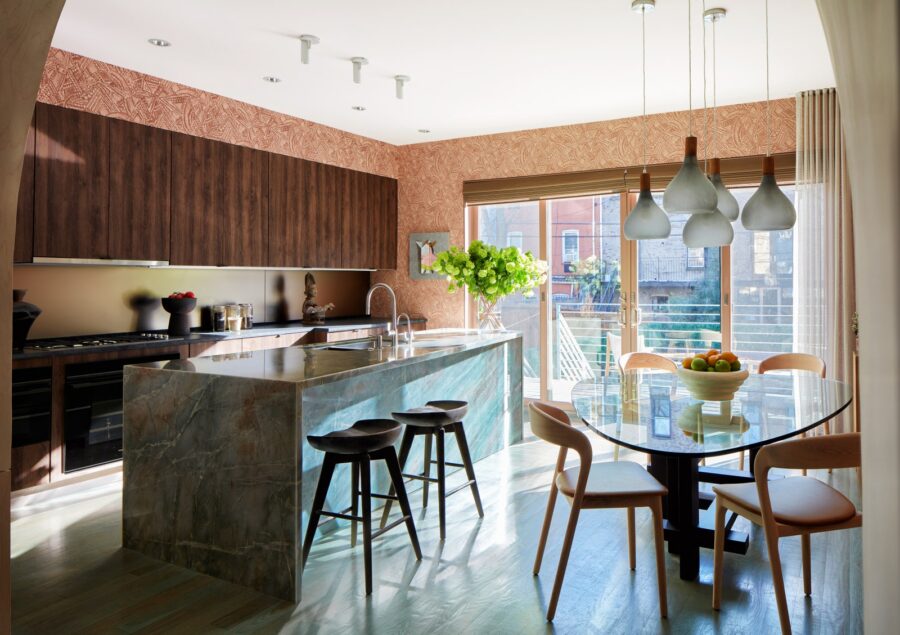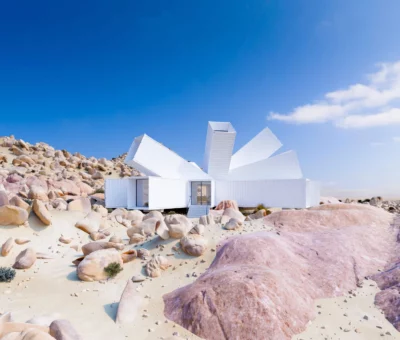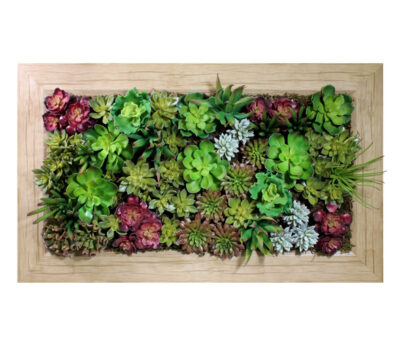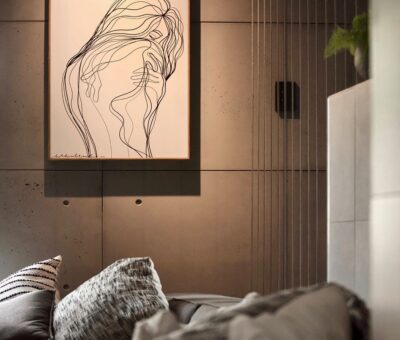Step Inside Malene Barnett’s Brooklyn Townhouse
Architectural Digest takes us into the home of Malene Barnett, founder of the Black Artists + Designers Guild (BADG). Malene has introduced the design world to a creative practice built around the modern Black experience. There’s no stronger case study for this concept than her own Brooklyn home.
When the artist and activist says that “there are a lot of moments throughout the space where you see the presence of Black hands, Black life, and Black design,” she’s not exaggerating.
Having lived in the 2,000-square-foot space since 2009, she was ready for a change. At this chapter in her life, she says, “I needed a space that really reflected where I am as an artist, as a designer, and as a woman.” New furniture and a fresh coat of paint weren’t going to be enough; this refresh would be the ultimate labour of Black love, and that required a special eye for curation. This is where Leyden Lewis entered the picture.
Barnett had been waiting for the right moment to collaborate on something personal with the AD100 designer, so when the opportunity to join forces in updating her own home presented itself—which, as she describes it, hit them like a “tsunami”—he was all in.
“I want people to understand the importance of working with not just an interior designer, but someone who has vision and understands that decorating space is about so much more than buying furnishings and placing items,” she explains. “Leyden is complex in a good way; he was thinking about how I could live in the space without me really thinking about it.”
When designing products, Barnett often considers how other people will live with them. So the starting point for this personal endeavour was installing wallpapers from her collection for Lulu and Georgia. Lewis points out how it all goes back to this idea of “finding people’s own personal character even within their own bodies of work.”
The prime example of this is the ceramic art installation in Barnett’s living room, something she had been wanting to do for years. Barnett created each tile pattern on the cut grid and made each of them by hand. Even with unexpected imperfections like shrinking during the firing process, the final result was even better than Barnett conceived—and it’s a manifestation of her latest transformation. “That ceramic installation is my legacy wall,” she says.
Lewis views this concept of legacy as the foundation of this iteration of the renovation. “Changing your environment is changing self, and creating opportunities for a self that you do not recognize,” he explains. “I think this is one of the most critical things; it should invite a new version of an unseen self rather than ‘Oh, I know who I am.’ ”
Breaking away from the rigidity of traditional layouts, the collective vision for Barnett’s home was an open floor plan so “all of the spaces are linked to each other visually.” Another one of her requirements was being able to dance in every space in the house in the name of Black joy, so Lewis spent a lot of time thinking about fluidity in the context of how to physically manoeuvre throughout the space.
But the most important part of this collaborative process of “renovation as rejuvenation” (as Lewis puts it) was tapping into ancestral memory. Reflected in the circular mirror is a framed piece mounted on the opposite wall titled Made for Mom that weaves together pictures of Barnett’s grandmother, her mother, and her mother’s siblings. Not only is this Barnett’s special way of celebrating coming from what she describes as “a lineage of makers,” but the specific placement signals to others that they’re entering a space that is “occupied by the energy and synergy of Black women” that are “supporting you spiritually.”
The most pressing concern for the primary bedroom was “How do we create a place that is an invitation to sensuality and rest?” Lewis says. The designer answered this call with a neutral palette that combines subtle frequencies of pattern to effect a serene private haven. “This room is my sanctuary,” Barnett avers. “It’s a space where I get to retreat and explore other parts of my life. Having my work around me is all a part of me sharing that love for self.”
You might also like...
-
Bringing The Festive Season Into Your Entertainment Space with The Wine Room

The holiday season is all about taking time off to enjoy with family and friends. Here are some ideas by The Wine Room on how ...
-
Step Inside The Joshua Tree Residence

The Joshua Tree Residence transcends the realm of fairytales; it stands as a testament to a remarkable architectural endeavour brought to life. Often, we conceive ...
-
Silk By Design: Fill Your Home With Greenery

It is believed that homes with plants usually make for happier occupants. Possibly because greenery has the power to instantly uplift and elevate a home, ...
-
Float’s concrete panels.

Architectural concrete without the mess, cost and time. “Inspired by the growing need to be more economical without compromising aesthetics and quality our concrete cladding ...


